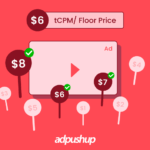Find out why and how advertisers use Demand Side Platform (DSP) to purchase digital ad space across multiple platforms, target specific audiences, and optimize campaigns in real-time. This blog covers every nitty-gritty detail of DSPs.
Before programmatic advertising was mainstream, publishers, and advertisers used to deal one-on-one to buy/sell digital ad inventory. If both parties agreed, an ad insertion order for the website was signed, and then the ads were placed. This was a time-consuming process, and there was a need for a mediator to conduct the exchange and strike a good deal for both parties.
So, the industry evolved, and we got DSPs, along with SSPs and ad exchanges.
A demand side platform (DSP) is a programmatic advertising tool used by advertisers to buy publishers’ ad inventory in real-time. It allows advertisers to access ad inventories from various publishers, supply-side platforms (SSPs), and ad exchanges.
What is a Demand Side Platform (DSP)?
To put it simply, a demand-side platform is a tool that allows advertisers to find the ad space to promote their products/services. By using a demand side platform, advertisers gain access to a marketplace where they can purchase ad inventory offered by publishers, be it display ads, video ads, or any other ad format.
Moreover, DSPs facilitate real-time bidding, allowing advertisers to compete for ad impressions based on various factors like demographics, location, device type, etc.
Marketers are increasingly adopting the demand side platforms. In fact, according to Fortune Business Insights, the demand-side platform market is projected to grow to USD 114.51 billion by 2030, exhibiting a CAGR of 23.9% during the forecast period.
A demand-side platform is basically one of the components of a programmatic advertising ecosystem, making digital advertising faster and better. With the demand side platform explained, let’s have a quick recap on what programmatic advertising is.
What is Programmatic Advertising?
Programmatic advertising is a form of advertising where the buying/selling of ad space is done using AI and machine learning. Demand-side platforms, supply side platforms, and ad exchange are a part of the programmatic advertising ecosystem, working together to facilitate the transactions via real-time bidding. Unlike traditional advertising, where the negotiations between the publishers and advertisers are done in a physical setup, programmatic advertising happens over the Internet. It hardly takes 30 milliseconds to complete a transaction.
How Does a Demand Side Platform Work?
Advertisers experience intense competition while bidding for impressions. At this point, it comes down to the DSP to fight on their behalf and win the ad impressions.
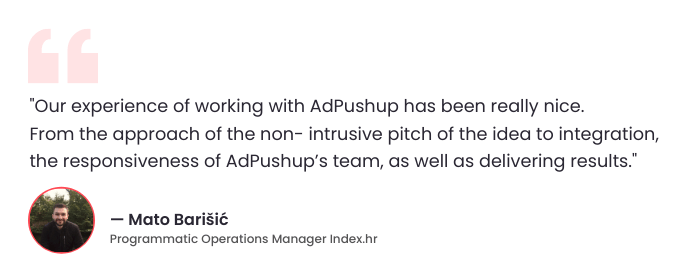
How does a DSP work: 6 Steps Process
- The publishers make their ad inventory available via SSP to the advertiser’s DSP.
- Advertisers set up ad campaigns by submitting their targeting criteria and bidding strategies to the DSP.
- The DSP is integrated with various ad exchanges, ad networks, and SSPs to access ad inventory from multiple publishers.
- As the publisher’s server raises an ad request, the DSP decides whether to bid on the ad space based on the advertiser’s targeting criteria.
- If the criteria fit, the DSP sends its bid to the ad exchange and competes with other advertisers for the ad space in real time.
- In case the bid wins, the impression is bought, and the ad is served to the user.
To illustrate DSP more accurately, let’s have a look at an advertising example.
How Does a DSP Function? [Demand Side Platform Examples]
Let’s now try to understand what is DSP in advertising and how do they work through a simple examples.
Example #1
Suppose an advertiser is targeting males between the ages of 25 and 35 who are passionate about sports for premium sportswear.
Once these users visit a publisher’s website, an ad request is made by the publisher’s server using the following criteria set by the advertiser.
State: California
Age: 33
Interests: Basketball
As the user data matches the advertiser’s criteria, the DSP would place the bid based on the floor price set by the publisher. Let’s say the floor price is $1 CPM, and multiple DSPs bid on the ad; the DSP with the highest bid wins.
The DSPs submit their bids independently without knowing each other’s bid amounts. If the bids range from $1.25 to $1.50 CPM, the highest bid of $1.50 CPM wins, and the advertiser secures the ad space.
Now that you know the bidding process, let’s have a look at another quick and straightforward demand side platform example.
Example #2
If a company offers products and services related to fitness, it would require a relevant audience that has shown interest in similar products. With the help of DSP, they can set up a programmatic ad campaign, which will help them target the users who have shown interest in fitness-related content across several sites and apps.
Why Advertisers and Publishers Need Demand Side Platforms?
While it’s often stated that DSPs are used by advertisers and SSPs by publishers, this oversimplifies their relationship. These platforms are actually complementary, and each plays a crucial role in the ad serving. Thus ‘DSP vs SSP‘ narrative is a misconception.
Why Do Advertisers Use Demand Side Platforms?
As mentioned earlier, demand-side platforms are used by advertisers to purchase ad ad inventories across different publishers. The efficient and automated nature of DSP allows advertisers to participate in real-time bidding (RTB) auctions and acquire the ad space relevant to their product/service. This is done through ad targeting functionalities provided by DSPs, which enable targeting specific audiences based on demographics, interests, behaviors, and other criteria.
Why Do Publishers Use Demand Side Platforms?
DSPs help publishers fill their ad space by connecting them with a wide range of potential buyers and managing real-time bidding for them.
They also provide publishers with valuable data insights about their audience, such as demographics and interests, which can help publishers refine their ad targeting and increase revenue.
Let’s now move beyond the basics of what Demand Side Platforms (DSPs) are and focus on how they actually work.
5 Core Features of a Demand Side Platform
Multiple components work together to make a demand-side platform. Let’s have a look.
1. Bidder
The bidder is the most important component of DSP, as it is responsible for bidding on impressions in real-time. The bidder stores campaign data in cached form to reduce latency in the bidding process.
2. Detailed Reporting
DSPs create detailed reports on the campaign performance for the advertisers to analyze the performance insights and make informed decisions in future.
3. User Profiling
DSPs collect data of the users who engage with the ads. Over time, based on the preferences of the users and the types of ads they are engaging with, the DSP creates their profiles and categorizes them within the audience segment. This user database is especially useful for ad optimizations and remarketing campaigns.
4. Campaign-spending Control
Also called banker, cashier, or budget manager, its main objective is to keep a cap on the budget spending, i.e., avoid overspending. This is done by setting budget-spend parameters, like the upper limit of the campaign budget, and defining budget-spending rules.
5. SSP-Ad Exchange Integration
DSPs are integrated with several ad exchanges and supply-side platforms, and this allows the platform to access and purchase ad inventory from many different sources. DSPs also consolidate the buying process, making it convenient for the advertiser to buy ad space from a single source.
By now, you might have understood what a demand-side platform is, how it works, and the components that make it. But there’s more to know. There are multiple types of DSPs as well, so let’s quickly delve into them.
Once the DSP has successfully purchased an ad, the ad server delivers the necessary ad materials to the publisher’s website.
What are the Types of Demand-Side Platforms?
There are two main types of demand-side platforms: self-serve and full-service. Let’s take a closer look at both of them.
Self-Serve
As the name suggests itself, self-serve is the kind of demand-side platform that allows advertisers to manage all of the ad operations on their own. All of the responsibilities are given to the advertisers, which generally include coming up with ideas, strategies, analysis, and list goes on.
A self-serve DSP can be a cost-effective solution for advertisers, as it reduces overhead costs and provides them with full control over their campaigns. However, to what extent it is easy to use depends on the level of in-house expertise and experience.
Full-Service
Full-service demand side platforms, on the other hand, save you time and effort. It takes responsibilities off the shoulders of advertisers by having an account manager do it all. Apparently, advertisers need to pay for the service for every campaign they launch.
Although full-service DSPs can take a toll on small-scale advertisers’ budgets, they let them outsource all responsibilities to an external team. This makes it a good option for organizations with bigger budgets.
Pros and Cons of a Demand-Side Platform
Demand-Side Platforms offer a range of benefits to advertisers, including better targeting, campaign management, and more. Here are some of the key pros of using a DSP in advertising:
Pros of a Demand-Side Platform
1. Better Targeting
The granular campaign targeting and settings provided by DSPs help advertisers get leads on valuable users that have high chances of conversion.
2. Better Campaign Management
Generally, a DSP uses algorithms to fulfill the needs of the advertiser. This is done by putting the advertiser’s demand first and looking for the inventory accordingly. Advertisers can also check the progress anytime using the DSP’s dashboard.
3. Access to a Variety of Inventory
A DSP stays in contact with multiple ad exchanges and continuously tweaks its software to improve targeting. This gives advertisers access to a variety of inventory for running ads.
4. Assistance from Experts
Many DSPs out there assign a support person to help the advertiser in case of technical difficulty or support for any other matter.
5. Saves Time and Effort
Finding the perfect inventory and placing bids can be a troublesome and time-consuming process for advertisers. DSPs do the legwork of finding inventory and placing relevant ads, allowing advertisers to focus on campaign strategies and business growth.
Cons of a Demand-Side Platform
While demand side platforms have many advantages, there are also some potential drawbacks to consider. Let’s take a look.
1. Complexity
Sometimes, managing a DSP and product marketing strategy can be overwhelming for advertisers. For instance, setting up a targeting campaign and assigning different targeting factors can take time to learn for advertisers. Think of it as new software that requires the advertiser to take out time to understand its use.
2. Costly for Small Advertisers
Advertisers need to pay DSPs for their service. This can either be a monthly or an annual charge. Hence, for small advertisers or advertisers with a low budget, DSP in advertising can be a dealbreaker.
Top 5 Demand Side Platforms
Here is a quick overview of the top 5 Demand side platforms:
1. Facebook Ads Manager
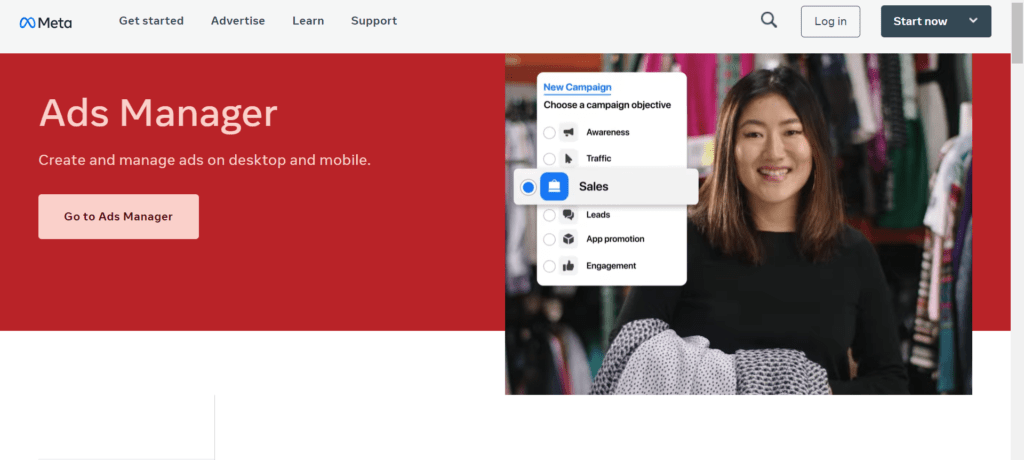
Starting our list with one of the most popular DSP platforms, Facebook Ads Manager acts as a one-stop-shop platform for advertisers. It allows them to create, edit, track, and manage their ad campaigns. Facebook’s DSP holds a lot for advertisers as Facebook has now made it to the mark of 3 billion active monthly users.
2. Google’s Display & Video 360
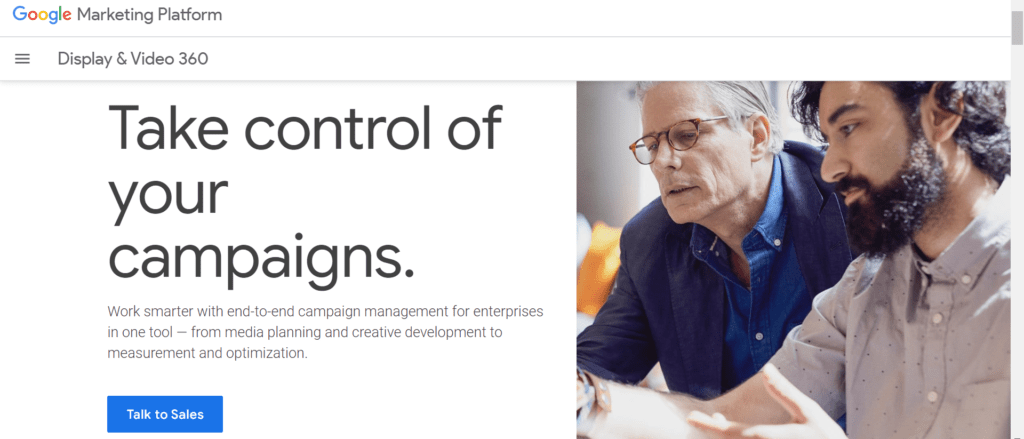
Display & Video 360 allows advertisers to purchase ad inventory across multiple ad exchanges and supply-side platforms (SSPs) using real-time bidding (RTB) technology. With Display & Video 360, advertisers can create and manage display, video, and native ad campaigns from a single platform. Not only that, there’s a lot more that it offers such as intelligent automation, advanced Audience Management, holistic measurement, and more.
3. MediaMath
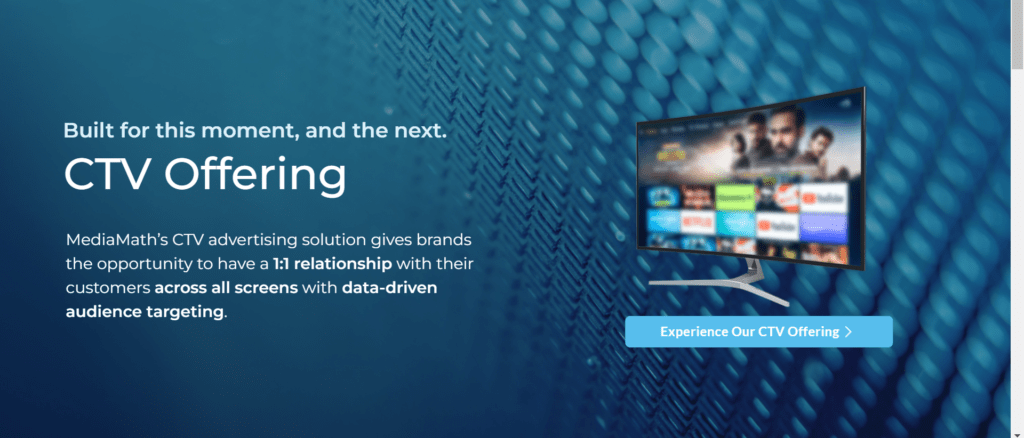
Next in the list is MediaMath, which is being used by many renowned organizations across the globe. The platform accounts for being used by the two-thirds of Fortune 500 companies. One of the best things about MediaMath it provides a holistic perspective on numerous features that enhance the effectiveness of potential ad designs.
Furthermore, the DSP also takes pride in its commitment to transparency, offering users complete access to their data and a range of customization options. Additionally, the platform provides a team of skilled experts who can assist with campaign setup and ongoing maintenance to ensure optimal performance.
4. Amazon AAP
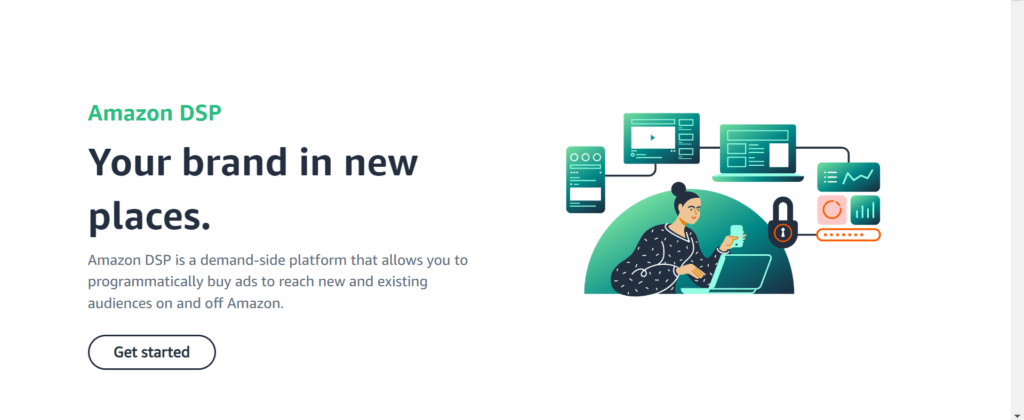
Amazon’s Amazon Advertising Platform (AAP), which has been dubbed as the enigmatic player in Ad Tech, provides a powerful solution for advertisers who are looking forward to expanding their reach.
Known for its elusive business practices, Amazon has been tight-lipped about the specifics of this DSP. However, it is widely acknowledged that advertisers can leverage this tool to connect with Amazon shoppers on multiple platforms, including Amazon sites, the web, and mobile applications.
5. Choozle
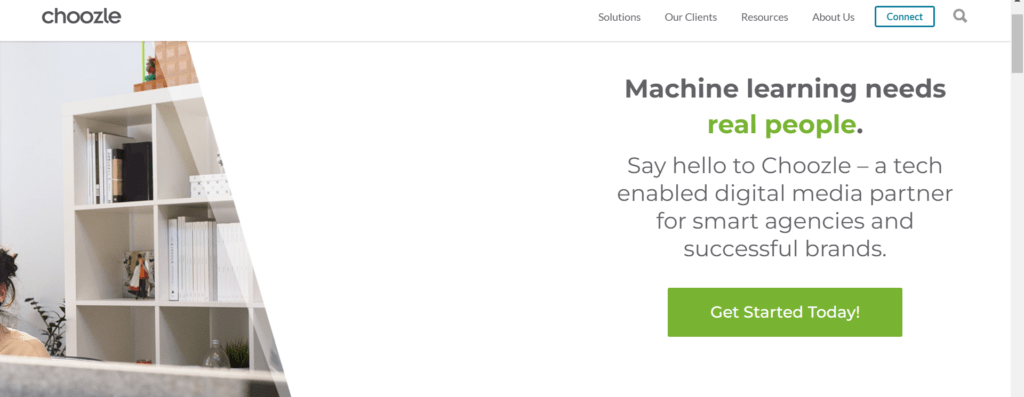
Last but not least DSP partner or platform in the list is Choozle, which is commonly known to blend user experience with first-in-class tools. The platform comes integrated with an array of features. This includes powerful targeting, buying and execution, design-focused capabilities, and the list goes on.
One of the top DSPs, Choozle is a platform that makes it possible for marketers to get access to as many programmatic impressions as possible.
Choozle’s advertising service helps clients allocate a larger portion of their advertising budget toward media spending by removing unnecessary costs, technology, and complicated processes. This is something that enables clients to put their focus on the most impactful aspects of their advertising strategy at the same time minimizing expenses and maximizing their return on investment.
Difference Between Demand Side Platform and Supply Side Platform
Now, let’s have a look at DSP vs SSP and take a look at all the differences they share with each other.
| Demand Side Platform (DSP) | Supply Side Platform (SSP) |
| A Demand Side Platform (DSP) enables buyers to purchase ad inventory in real-time | Supply Side Platform (SSP) allows publishers to sell their ad inventory to buyers in real-time. |
| The end users of a DSP are advertisers who want to market their products/services or marketing agencies that help their clients with their ad campaigns | The end users of SSPs are wholly different. SSPs are used by publishers looking to sell their ad inventory to advertisers. |
| A demand side platform allows advertisers to buy the ad space across multiple ad exchanges. | A supply side platforms allow publishers to showcase and sell their ad inventory across many different ad exchanges. |
| DSPs offer audience targeting capabilities, which allow advertisers to reach specific audience segments based on factors such as demographics, interests, and behaviors. | SSPs primarily facilitate real-time auctions for publishers’ ad inventory and serve the ads to the highest bidder. |
| DSPs gives the ability to optimize multiple campaigns across various ad exchanges, enabling more effective targeting and improved performance. | SSPs integrate ad inventory from multiple sources – ad networks, ad exchanges, and DSPs, to streamline the selling process for publishers. |
What’s the Difference Between Demand Side Platform and Ad Network?
Think of ad networks as middlemen between advertisers and publishers.
- They act as a marketplace where publishers can sell ad space, and advertisers can purchase it.
- Ad networks generally have pre-existing relationships with publishers, so they can quickly and easily provide access to a wide range of websites and ad inventory.
- On the other hand, DSPs are like the next generation of ad networks. They also act as a marketplace and provide a more advanced and sophisticated approach to ad buying.
- Moreover, DSPs use data and technology to help advertisers target specific audiences and optimize their ad campaigns in real-time.
What kind of User Data Do DSPs Employ for Targeting and Bidding?
Data management platforms come equipped with various capabilities, one of which allows them to collect multitudes of user data sources. They use this data to create effective strategies and bid optimization techniques accordingly.
Now, you must be wondering how they collect this data.
DMPs, or Data Management Platforms, gather valuable campaign performance information from a variety of sources. This includes data collected from ad impressions and ad clicks, which provides important metrics such as ad spend, click-through rates (CTR), cost per click (CPC), and return on investment (ROI).
In addition to this, DMPs also utilize other sources to supplement their data. Take a look.
Data Provided with Advertisers
In addition to collecting campaign performance data, DMPs also allow advertisers to import their own user data from their customer relationship management (CRM) systems. By utilizing this data, advertisers can create specific target audiences for their remarketing campaigns or build lookalike audience based on their existing customers’ profiles.
Data Provided with Publishers
Just like advertisers, publishers also receive certain abilities. They can also provide information to demand side platforms about their content where the ad impression appears.
This data includes demographic information about the user, such as their age, gender, and location, as well as information about the type of device they are using. Publishers can also provide behavioral data, which includes the user’s browsing and shopping history, and the content they have engaged with in the past.
Data Purchase
Lastly, demand side platforms also deal with the third-parties to buy the data. The information bought from third-party data brokers and exchanges allows DSPs to build custom audience segments. All of these are done to make it easy for the buyers. Advertisers can specify the criteria and get access to a desired audience segment.
What Have We Learned? (Key Takeaways)
- What is a demand side platform?: A demand side platform is a tool used by advertisers to purchase ad space across the web in real-time bidding (RTB) auctions.
- How DSPs work?: DSPs work by integrating with ad exchanges and SSPs to access ad inventory and bid on relevant ad spaces.
- DSP and SSP: Demand-side platforms and supply-side platforms work together to assist advertisers and publishers in trading ad inventory.
- Self-Serve vs. Full-Service DSPs: Advertisers can choose between self-serve platforms for greater control or full-service DSPs for hands-off management, depending on their budget and expertise.
- Data management platforms (DMPs): DMPs play a crucial role in providing user data to DSPs for targeted advertising.
- Demand Side Platforms List: Some of the most renowned
AdPushup is a one-stop shop that helps growing publishers build and manage their advertiser relationships, optimize ad layouts, and manage their ad stack—all in one place, with personalized support from ad ops experts. Focus on your business, leave ad ops to the experts, sign up here.
Frequently Asked Questions
A demand-side platform is a tool used by advertisers to buy digital ad space across a variety of platforms, using data to target specific audiences and optimize campaigns in real-time. We hope by now you know exactly what is a demand-side platform.
Demand-side platforms are used by advertisers to purchase digital ad space, while supply-side platforms (SSPs) are used by publishers to sell ad space.
Not Google as a company, but Google’s product, “Google’s Display & Video 360 (formerly DoubleClick Bid Manager),” is a demand-side platform that allows advertisers to buy digital ad space across a variety of platforms using advanced targeting and optimization tools.
A demand-side platform is responsible for selecting the best ad space and placing bids for them, tracking ad campaign performance in real-time and providing detailed insights, targeting users based on criteria set by the advertiser, and so on.

Deepak has a keen eye for detail and a deep understanding of the ad tech landscape. Whether it’s through in-depth articles, thought-provoking insights, or compelling storytelling, he’s dedicated to helping people navigate the complex world of ad tech with the simplicity of his words.


